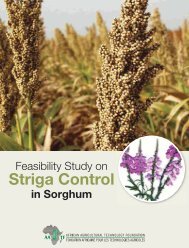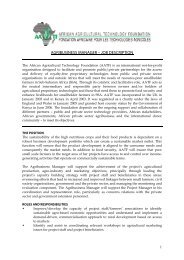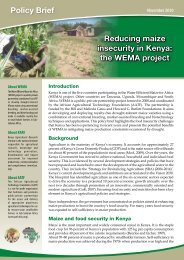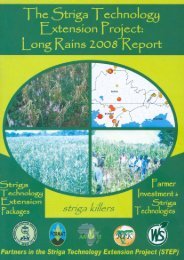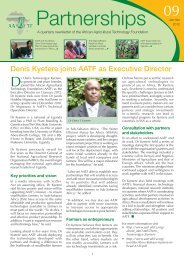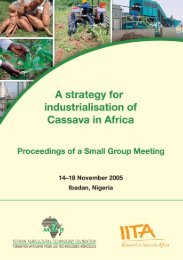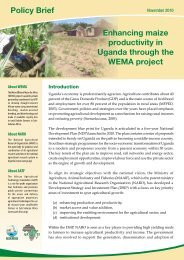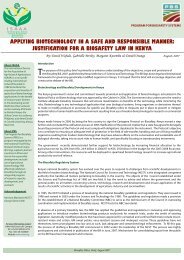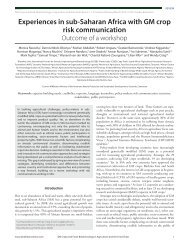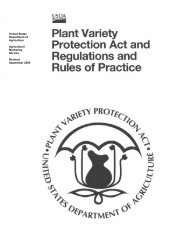Baseline Study of Striga Control using IR Maize in Western Kenya
Baseline Study of Striga Control using IR Maize in Western Kenya
Baseline Study of Striga Control using IR Maize in Western Kenya
Create successful ePaper yourself
Turn your PDF publications into a flip-book with our unique Google optimized e-Paper software.
will be shown latter <strong>in</strong> this section. The marg<strong>in</strong>al effects from the logit model provide<strong>in</strong>terest<strong>in</strong>g <strong>in</strong>sights <strong>in</strong>to the potential effects <strong>of</strong> technology and policy <strong>in</strong>terventions onhousehold poverty. The marg<strong>in</strong>al effects essentially constitute results <strong>of</strong> a policy simulation.The marg<strong>in</strong>al effects were computed only for significant variables and converted <strong>in</strong>topercentage changes <strong>in</strong> the probability <strong>of</strong> be<strong>in</strong>g poor associated with a unit change <strong>in</strong> the value<strong>of</strong> an explanatory variable, hold<strong>in</strong>g all other factors constant.<strong>Striga</strong> <strong>in</strong>festation, <strong>in</strong> terms <strong>of</strong> the number <strong>of</strong> years it has been on the maize farm, has theexpected positive and significant <strong>in</strong>fluence on household poverty, imply<strong>in</strong>g that the longer<strong>Striga</strong> stays on a maize farm, the more likely the household is to be poor. Perceived <strong>Striga</strong>damage on maize yields, weighted by the share <strong>of</strong> maize <strong>in</strong> total household <strong>in</strong>come, has avery significant positive <strong>in</strong>fluence on household poverty, <strong>in</strong>dicat<strong>in</strong>g that <strong>Striga</strong> damage hasbeen more severe among households who derive much <strong>of</strong> their <strong>in</strong>come from maizeproduction. On the other hand, households that adopt <strong>in</strong>tegrated <strong>Striga</strong> control methods,<strong>in</strong>volv<strong>in</strong>g uproot<strong>in</strong>g and burn<strong>in</strong>g, tend to have 15% lower probability <strong>of</strong> be<strong>in</strong>g poor.The results show that an additional child to a household, hold<strong>in</strong>g other factors constant, raisesthe probability <strong>of</strong> be<strong>in</strong>g poor by 12%, imply<strong>in</strong>g that 10 additional children will almostcerta<strong>in</strong>ly make an average household slide <strong>in</strong>to poverty. The probability <strong>of</strong> be<strong>in</strong>g poor<strong>in</strong>creases with age, at the rate <strong>of</strong> 0.3% per year. An additional year <strong>of</strong> school<strong>in</strong>g forhousehold heads reduces a household’s probability <strong>of</strong> be<strong>in</strong>g poor by 1.3%, imply<strong>in</strong>g that ahousehold headed by a farmer with 10 more years <strong>of</strong> education than the average level <strong>of</strong>education (4.4 years) <strong>of</strong> an average household is 13% less likely to be poor.34




